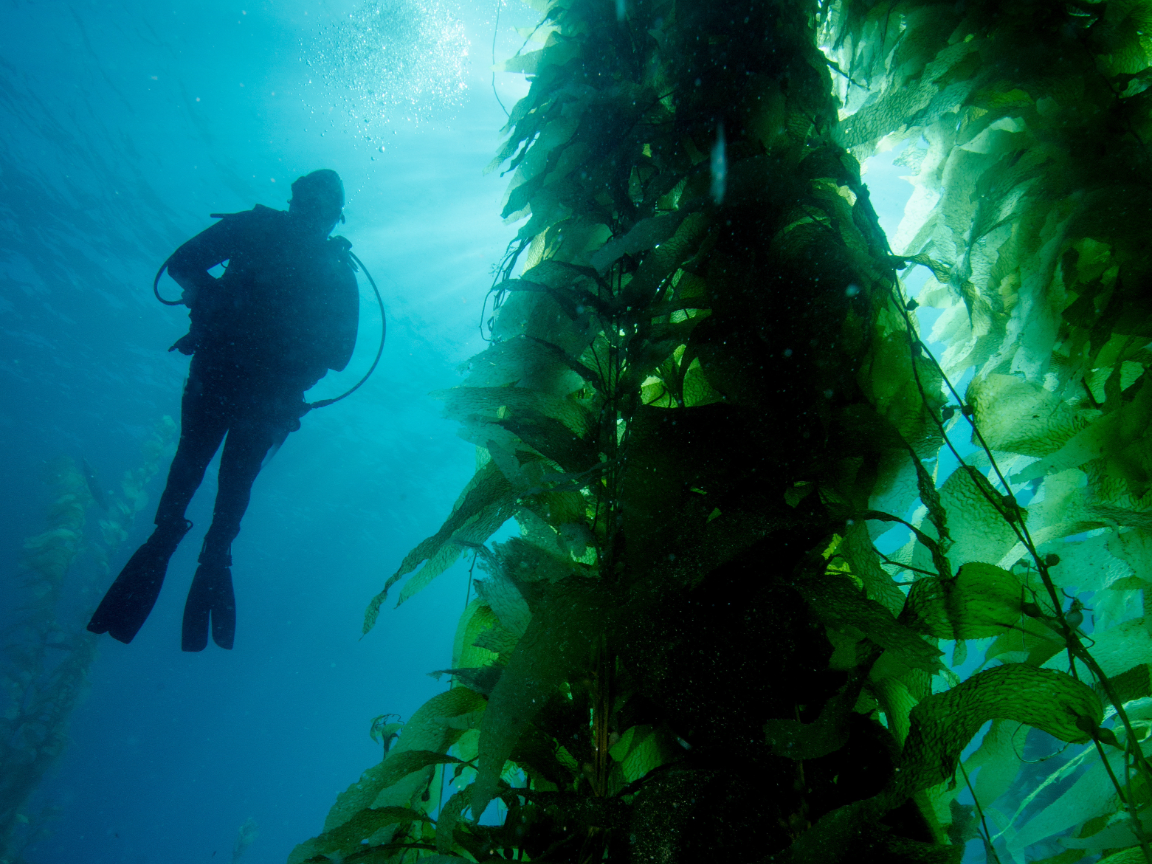With a new year in front of us and fresh adventures on our minds, the Shearwater team in Vancouver put our heads together to recommend 12 dive destinations for 2024. Some are new, some are old favourites, and the list offers something for every skill level.
1. Catalina Island, California, USA
Head to Casino Point for shore dives and easy access to the great kelp forest. First established in 1962, the park offers some of the best shore diving in California. In addition to the giant kelp, keep an eye out for lobsters, abalone, octopus, small fish, and moray eels. Meanwhile, areas with a sandy bottom may give you an opportunity to spot angel sharks and bat rays. Water temperature ranges from 70-74 °F in the summer to 55-59 °F in the winter with September to mid-October being the warmest and a great time to enjoy visibility up to 100 feet. – Shaun, Software Development
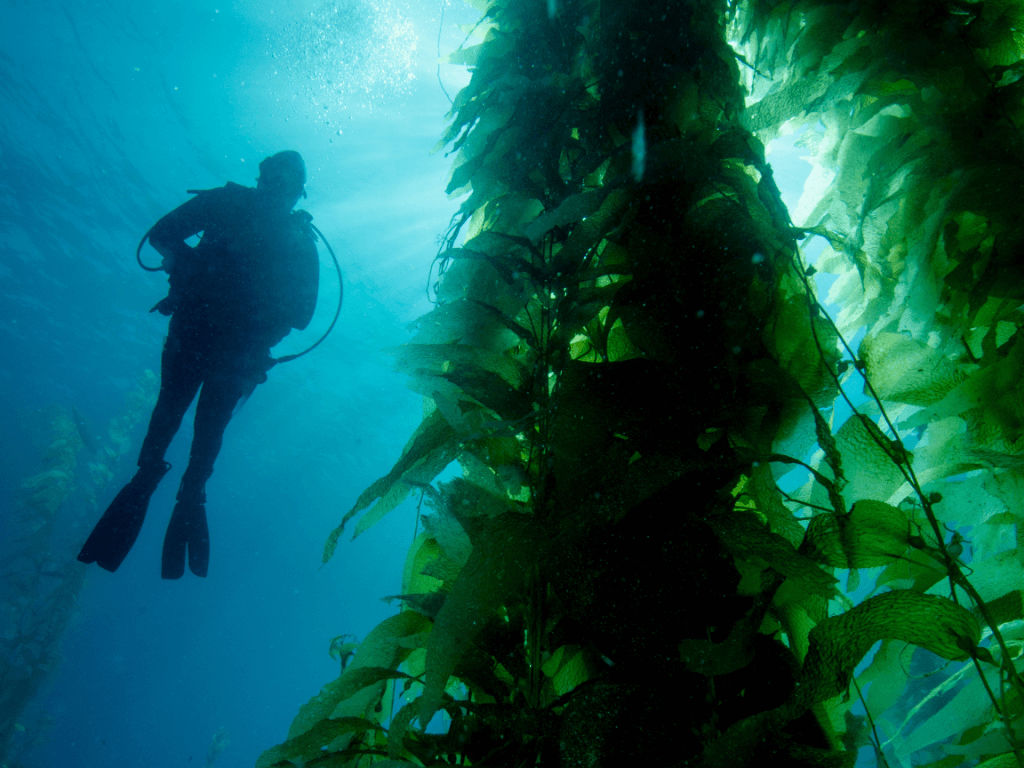
Casino Point Underwater Dive Park (Avalon Underwater Park) diver with giant kelp.
2. Bell Island, Newfoundland, Canada
Not only do you get the unique opportunity to explore an abandoned iron ore mine and World War II shipwrecks, but in early spring you can also encounter icebergs in Newfoundland’s famed iceberg alley. If you wait until later in the summer, you may be fortunate to experience humpback whale sightings as well. The area holds so much history about Canada and the relationship between people, the land, and the ocean. – Trisha, Customer Care & Marketing
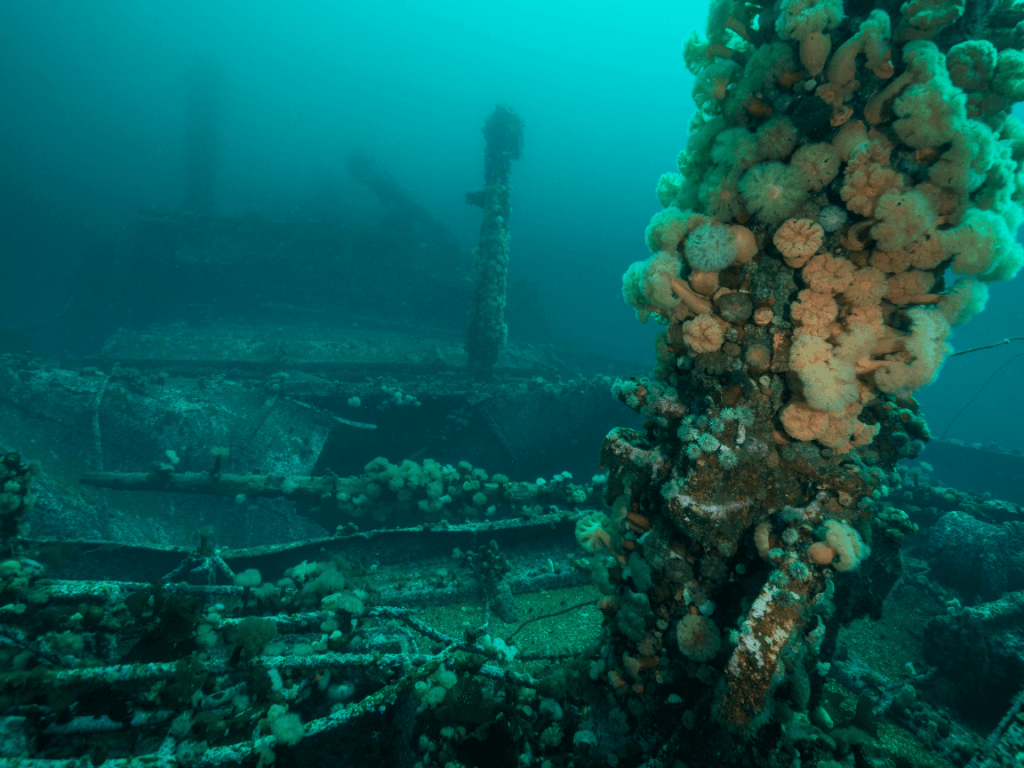
Bell Island Shipwreck, Newfoundland.
3. Grand Cayman
The island of Grand Cayman boasts hundreds of dive sites, but we’re partial to a couple that feature bronze sculptures made by artist and Shearwater colleague, Simon Morris. The 13-foot Guardian of the Reef was placed by Divetech, just off Lighthouse Point in 2014 as a beacon of marine conservation. Another statue, Amphirite, can be found on Sunset Reef and was placed there in 2000. It has been voted the most popular shore dives on Grand Cayman.
The island offers a wide range of diving with warm, clear water. From mini walls, reefs and wrecks to deep walls for technical divers. The beautiful Caribbean setting is great for exploring from shore or by boat. The people are warm and friendly and dive sites for all abilities abound. - Simon, Sales Manager
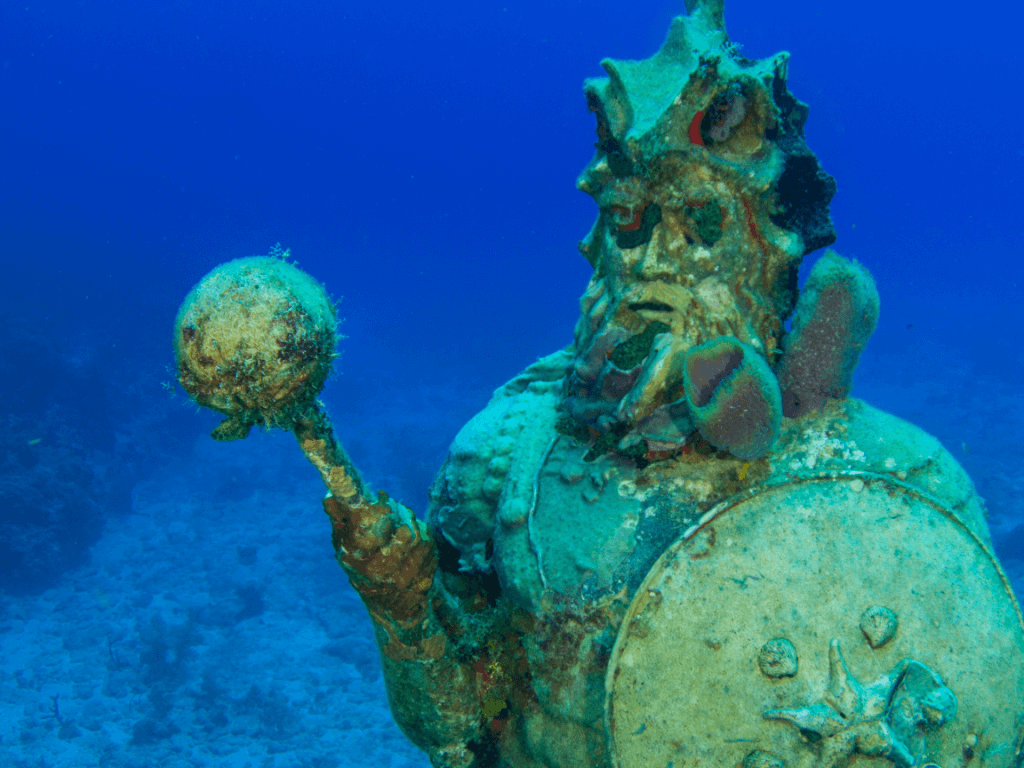
Guardian of the Reef statue by Simon Morris.
4. Hawaii, USA
Hawaii was a popular destination among our team, likely due to its easy access from Vancouver but also it’s wide array of dive offerings, from shallow coral gardens near Hilo which are great for beginners, to night dives with Manta Rays near Kona on the Big Island. - Mark, Firmware Engineering and Danielle, Sales Operations
Maui also has great opportunities around the Molokini Crater offering a protected bay with up to 100 feet of visibility and approximately 250 different marine species including large schools of pennant butterfly fish, the rare, freckled snake eel, and giant blue fin trevally. For an advanced dive, check out the back slope of the crater for a world-class wall dive with a good drift.
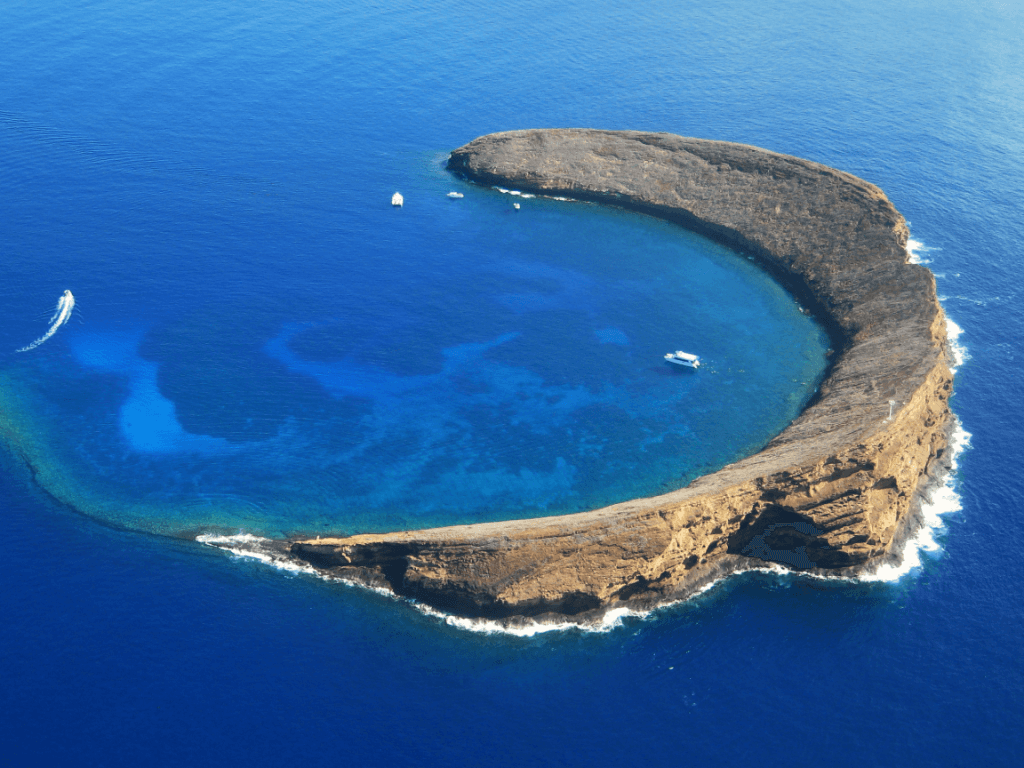
Aerial View of Molokini Crater, off the coast of South Maui, Hawaii, USA.
5. Cozumel, Mexico
Easy access also makes Mexico a prime destination for North American divers, and it is worthwhile to go the extra mile and head over to Cozumel. The island is home to around 500 species of fish, 60 species of coral, not to mention marine mammals. It’s known as the drift diving capital of the world with fascinating walls and swim throughs. Practice your drift skills and get comfortable with overheads on sites suitable for beginners, advanced, and intermediate divers.
Cozumel is also a great place for photography whether it’s the giant brain coral, large groupers, green moray eels, or nurse sharks. There is sure to be something for everyone. For those looking for a more technical dive, it’s an easy day trip to the cenotes on the mainland. – Virginia, Human Resources
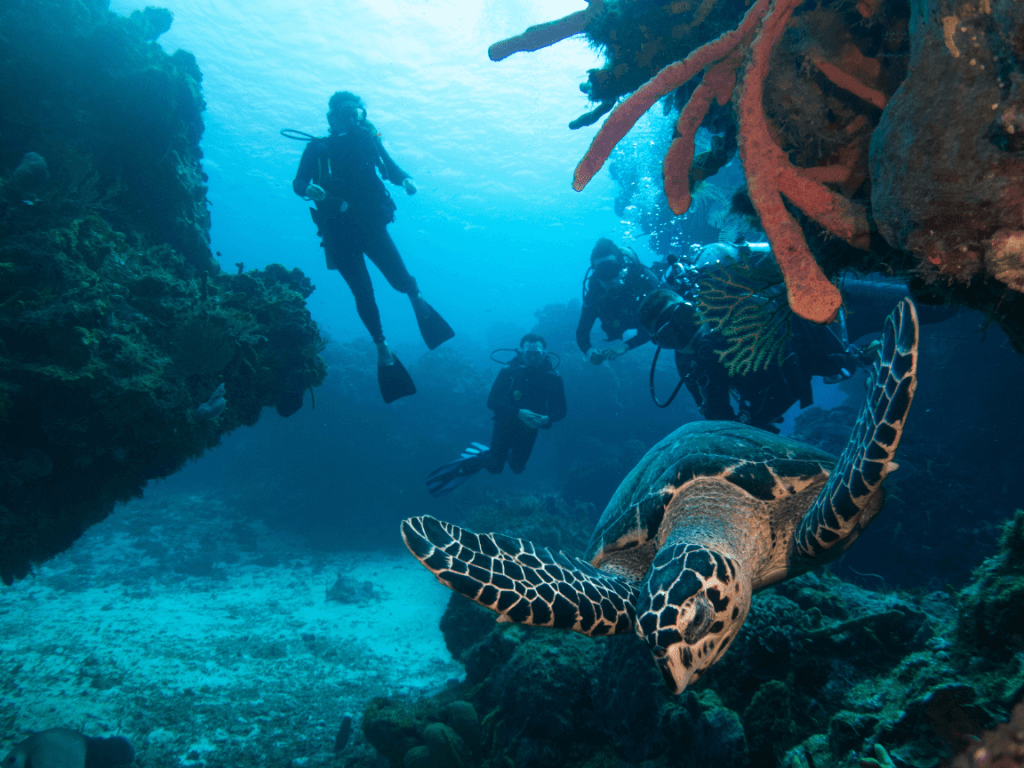
Divers with turtle in Cozumel. 📷 Juan Marcos.
6. Bonaire
Known as the shore diving capital of the world, Bonaire has been protecting its marine environment for over 35 years. The result is over 85 dive sites with an estimated 350 species of fish. Famous for its shore diving, the calm, clear waters create stunning conditions for photographers and divers of all skill levels. Whether you prefer to use one of the popular drive and dive packages where your group can independently explore the island, or the services of a dive guide, or dive boat, opportunities are numerous on Bonaire. – Mitch, R&D Engineering
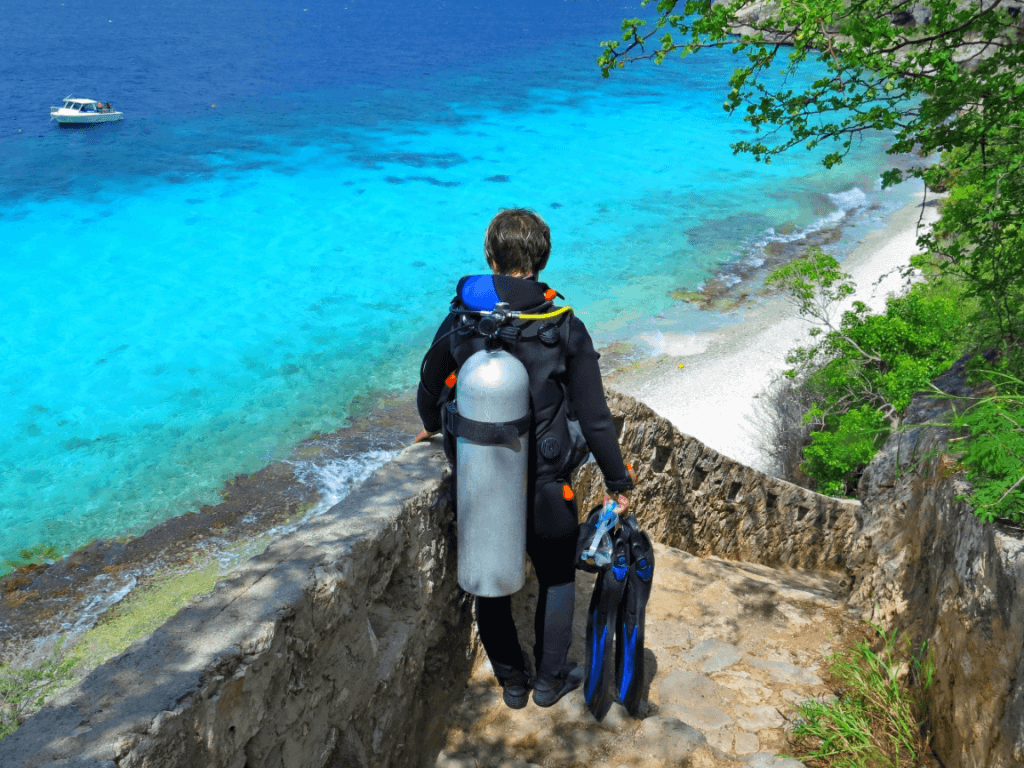
Diver walking down steps to the dive site known as 1000 Steps.
7. Bikini Atoll, Marshall Islands
The Marshall Islands consists of 23 islands surrounding a central lagoon. Bikini Atoll is located at the northern end and was used by the US military for nuclear weapons testing between 1946 and 1958, including the test of the first H-bomb in 1952. The site is the first in the Marshall Islands to be listed as a UNESCO World Heritage site due to being an outstanding example of a nuclear test site.
While the region’s traumatic history cannot be ignored, the Atoll has rebounded with huge coral heads, schools of fish, and large pelagic mammals. Look for massive shoals of glittering glassfish, while large fish like tuna, snapper, and barracuda abound. Shark species are numerous including gray reef, silvertip, blacktip and more.
The atoll offers some of the world’s best tec diving on wrecks. It’s essentially an underwater warship museum including the USS Saratoga aircraft carrier with its 888 feet / 270 meter flight deck. The armada of wrecks is certainly the main attraction. Average depths of 164 feet / 50 meters make Bikini Atoll most suitable for technical trained divers. – Ivan, Customer Support

Diving helmet on USS Saratoga, Bikini Atoll.
8. Koh Lanta, Thailand
Located in the South Andaman Sea, Koh Lanta is a great base for diving in the region. Hin Daeng / Hin Muang is one of the most well known destinations, offering giant pinnacles and steep walls covered in red and purple soft corals. Take your time as you circle around these behemoth structures. Search for the small and interesting marine life in the crevices. Don’t forget to take an occasional look out into the surrounding deep blue where a shadow or graceful movement could reveal a manta ray, whale shark, or curious minke.
Koh Haa is another popular site within the Koh Lanta National Marine Park. It includes five islands offering both shallow and deeper dives plus swim throughs appropriate for all levels of divers. Experienced divers will enjoy The Chimney, a vertical swim through with a fish bowl at the top. Watch for turtles, schools of yellow snapper, moray eels, and maybe search for the hard to spot stonefish. – Allison, Marketing
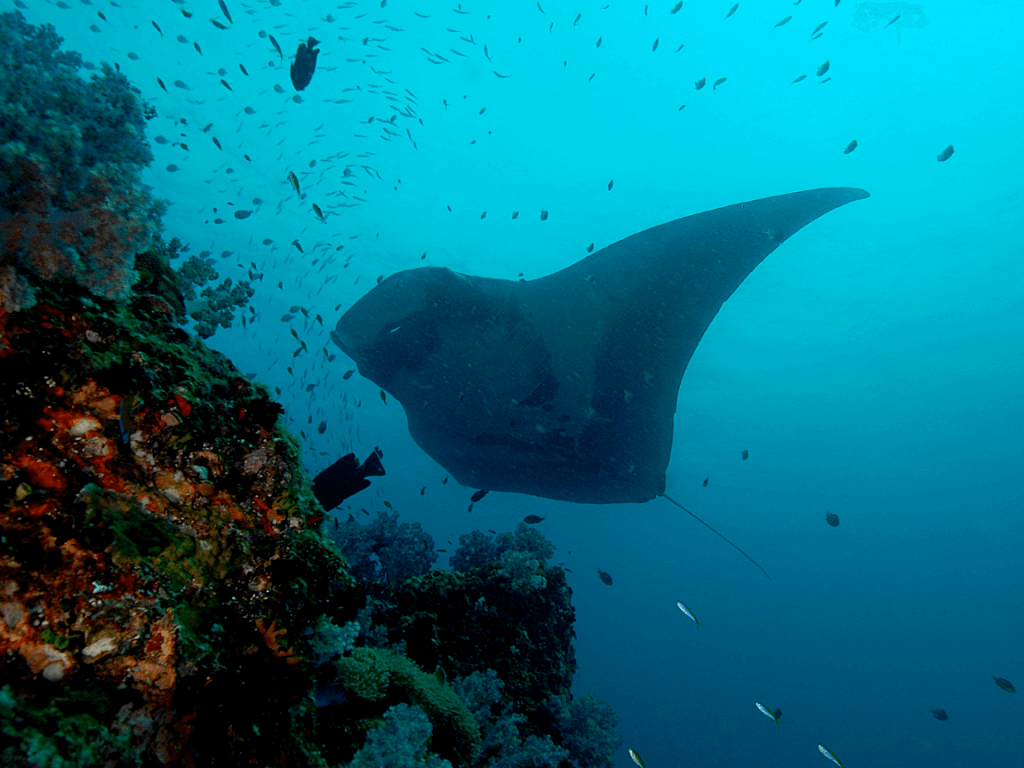
Diving near Koh Lanta with Manta Rays.
9. Malta
Located in the Mediterranean, south of Italy and east of Tunisia, the Maltese archipelago is made up of three islands: Malta, Gozo, and Comino. A popular dive spot and easily accessible for European based divers, the best months to visit are from June to September for comfortable temperatures and fewer storms.
Malta boasts a variety of dive sites for every level of experience but is well known for its historical shipwrecks.
In addition to popular sites like the Blue Hole and Cirkewwa Reef, underwater archaeological research has discovered wrecks ranging from a 2,700 year old Phoenician shipwreck, to WWI and WWII battleships. These areas have been declared Archaeological Zones by the Cultural Heritage Act of Malta and can only be dived through operators approved and registered with the Underwater Cultural Heritage Unit. The history makes it worth the effort and the diversity of sites will keep divers enthralled for days. – Jose, Customer Support
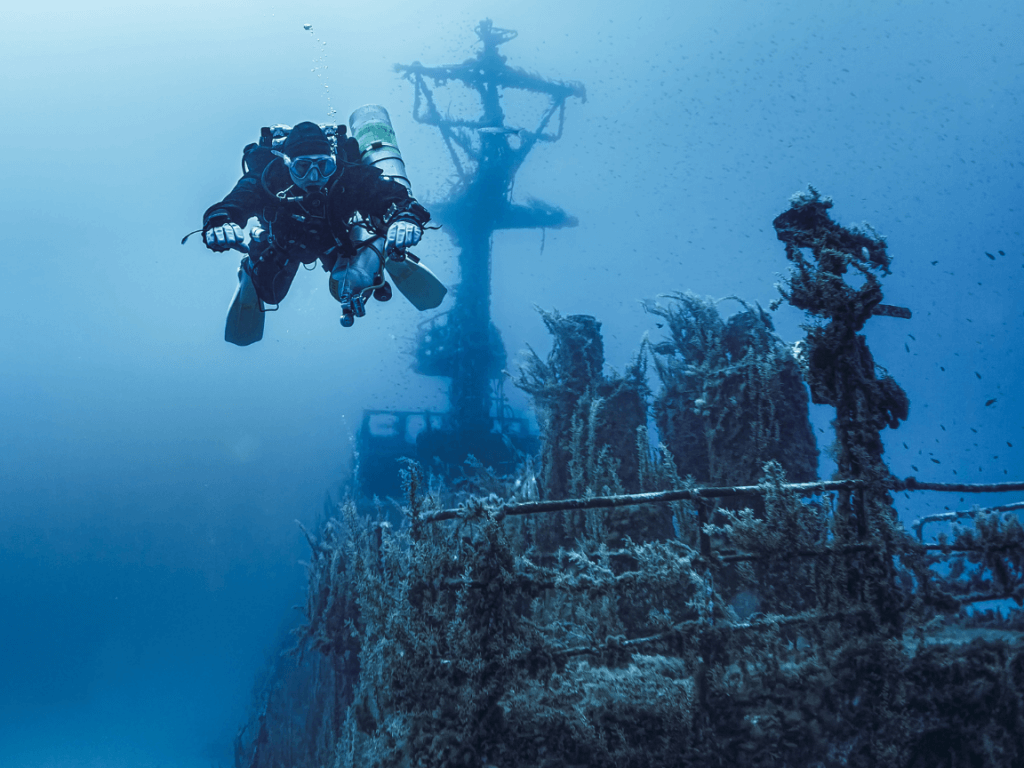
Patrol Boat P29 (Boltenhagen) is one of the two wrecks in Cirkewwa and one of the most popular dive sites in Malta.
10. Sound of Mull, Scotland
If you’re a wreck enthusiast but looking for something away from the crowds, how does the west coast of Scotland sound? The Sound of Mull has a lot to offer with cold but clear conditions and multiple sites to explore. The SS Hispania, a Swedish vessel sank in 1954, and while it's decaying over time, it remains largely intact and is one of the best diving locations in the UK. Meanwhile, the SS Shauna, which sank in 1913 sits upright and intact. A thick carpet of colourful sponges and plumose anemones make it a vivid cold water site. Join a local operator for the best information on tidal conditions for these sites. – Matt, Research & Development
11. Philippines
Boasting over 7,000 islands, the Philippines is home to some of the world's best diving featuring pristine coral reefs, lush coral gardens, huge schools of fish, and even whale sharks. Tubbataha Reef Natural Park is a UNESCO world heritage site and often high on the bucket list of divers who travel extensively. It’s known for rich biodiversity with an estimated 600 species of fish, 360 species of corals, 11 species of sharks, and more. Tubbataha can only be accessed by a liveaboard which helps keep the impact of visitors low.
Within easier reach than Tubbataha, divers will be entranced by the underwater beauty of many locations throughout the Philippines including, Batangas, Puerto Galera, Bohol, and Coron. Enjoy warm water and tropical views or seek out something different like the sardine run and thresher sharks in Cebu. – Maria, Finance

Sardine Run in Moalboal. Cebu, Philippines 📷 Daniel Lamborn.
12. Port Hardy, Canada
In the far north of Vancouver Island, lies some of the world’s best cold water diving. The small town of Port Hardy becomes the jumping off point for incredible sites like Browning Wall in God’s Pocket. The cold, clear, nutrient rich waters support a great diversity of marine life including colourful nudibranchs, giant pacific octopuses, wolf eels, and rockfish. The walls are thick with red soft coral, colourful sponges, anemones and sea stars. Be prepared for a visit from inquisitive sea lions or get lost in the beauty of the soaring bull kelp as you watch from below. – Roy, Customer Support
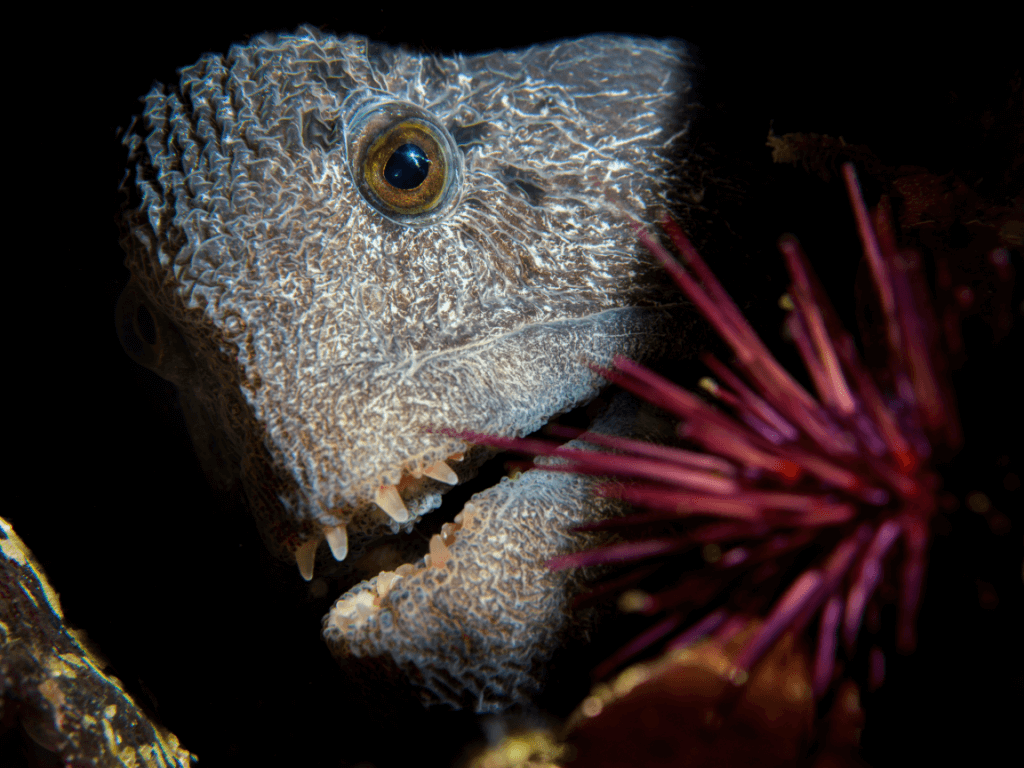
Wolf Eel, Port Hardy, Canada.
If you’re anything like our enthusiastic colleagues here at Shearwater, you don’t need to travel far to find great adventures, but when the new year rolls around, there is an excitement to planning something bigger for the year ahead, swapping stories, and digging through guidebooks. Now is the time to dust off your bucket list and get ready for 2024.

